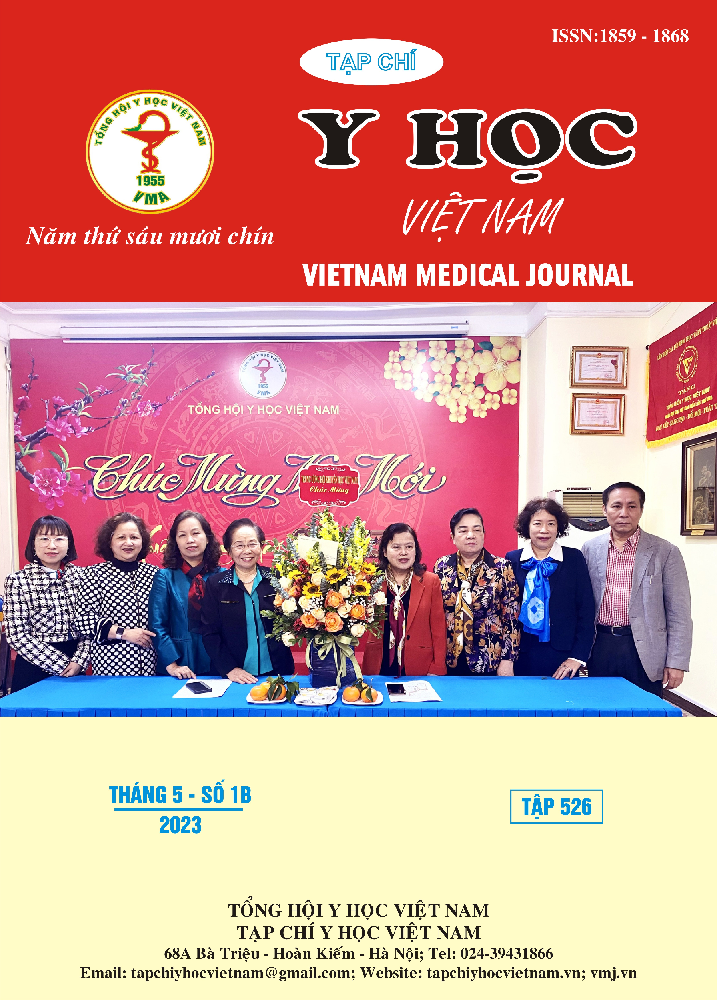THE RESULTS OF SURGICALLY TREATED UNSTABLE PELVIC FRACTURES BY OPEN REDUCTION AND INTERNAL FIXATION AT CANTHO CENTRAL GENERAL HOSPITAL
Main Article Content
Abstract
Background: The internal fixation surgery is currently effective method for treating unstable pelvic fractures, which stabilizes fractures anatomically and enhances rehabilitative ability for patients. Objectives: (1) Identifying some clinical characteristic of patients with unstable pelvic fracture; (2) Evaluating the surgical results by open reduction and internal fixation on these patients. Material and methods: A cross-sectional descriptive and prospective study was carried out in 13 patients which were made internal fixation surgery from June 2022 to Febuary 2023. Results: 13 patients had the average age: 38.38 ± 13.75 year-old; traffic accident was the most common reason for pelvic fracture; the majority of patients are classified there pelvic fracture in Tile B2 and had other organs damages. The anatomical results were excellent – good; the functional outcomes through Majeed’s score were fair (55.4 ± 7.3 points in 1 month) and good (70.2 ± 7.1 points in 3 months). Conclusions: The open reduction and internal fixation surgery on patients with unstable pelvic fracture has satisfactory results.
Article Details
Keywords
unstable pelvic fracture, internal fixation, Tile classification, anatolical reduction, functional outcomes, Majeed’s score
References
2. Nguyễn Ngọc Toàn (2011), Nghiên cứu điều trị gãy khung chậu không vững bằng khung cố định ngoài, Luận án Tiến sĩ Y học, Học viện Quân Y, Hà Nội.
3. M. Mi et al. (2021), "Management and outcomes of open pelvic fractures: An update", Injury. 52(10), tr. 2738-2745.
4. Salama AM Elzohairy MM (2016), "Open reduction internal fixation versus percutaneous iliosacral Screw fixation for unstable posterior pelvic ring disruptions", Orthopaedics and Traumatology: Surgery and Research (2016).
5. Axel Gänsslen (2021), Pelvic Ring Fractures, Springer.
6. S. Ghosh et al. (2019), "Epidemiology of pelvic fractures in adults: Our experience at a tertiary hospital", Chin J Traumatol. 22(3), tr. 138-141.
7. Lang P. et al. (2022), "Epidemiological and Therapeutic Developments in Pelvic Ring Fractures Type C from 2004 to 2014 - a Retrospective Data Analysis of 2,042 Patients in the German Pelvic Register (DGU)", Z Orthop Unfall. 160(2), pp. 172-182.
8. N. Lundin và A. Enocson (2022), "Complications after surgical treatment of pelvic fractures: a five-year follow-up of 194 patients", Eur J Orthop Surg Traumatol.
9. Ahmed Mham Mostafa (2021), "An overview of the key principles and guidelines in the management of pelvic fractures", Journal of Perioperative Practice. 31(9), pp. 341-348.
10. C. T. Nana et al. (2022), "Functional outcome of unstable pelvic fractures treated in a level III hospital in a developing country: a 10-year prospective observational study", J Orthop Surg Res. 17(1), pp. 198-209.
11. Giedrius Petryla (2021), "Comparison of One-Year Functional Outcomes and Quality of Life between Posterior Pelvic Ring Fixation and Combined Anterior-Posterior Pelvic Ring Fixation after Lateral Compression (B2 Type) Pelvic Fracture", Medicina 2021. 57, pp. 204-213.


